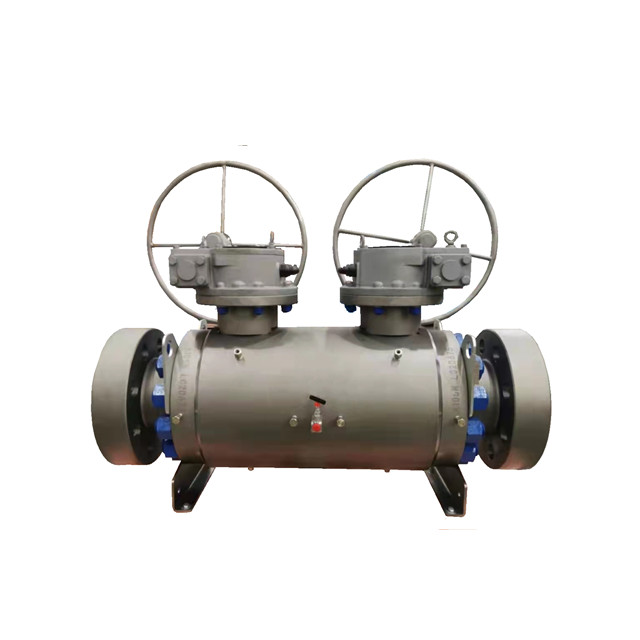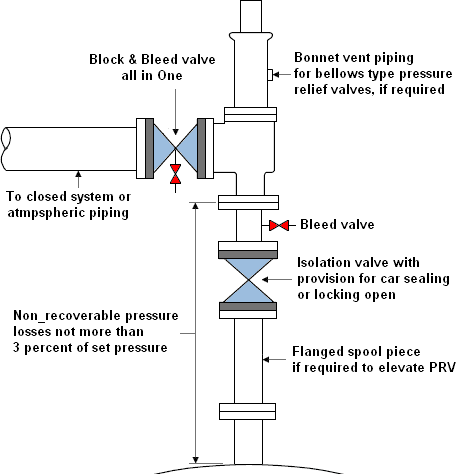Looking for a comprehensive guide on the double block and bleed valves? Look no further! Our Ultimate Guide covers everything you need to know, from the basics of what double block and bleed valves are to their benefits and various applications.
A double block and bleed valve (DBB valve for short) are one of the most widely-used safety valves on the market, as it combines two separate blocks and bleeds systems into one compact package, making it suitable for space-constrained applications.
Double block and bleed valves are commonly installed to control media flow in an upstream and downstream direction. Once locked into place, two block valves provide positive isolation, with the latter serving to depressurize excess media pressure if required. Let’s take a detailed view of the valves.
Table of Contents
ToggleWhat Are Block and Bleed Valves (BBVs)?

A double block and bleed valve combines two inline-block valves with one bleed valve to perform the functions of three individual valves while saving space, installation time, maintenance cost, weight, and cost compared to using separate ones individually. They are often utilized in industrial settings that use liquid pipelines, such as oil and gas industries, petrochemical manufacturing facilities, water networks, or transmission lines carrying refined materials.
Double block and bleed valve (DBB valve) refer to two individual block valves linked together with a bleed valve in between, used to check for leakage. While this remains their most frequent use case, DBBs can also be utilized for other sealing requirements and quickly adapt to changes in fluid system pressure or flow needs.
Types of Double Block and Bleed Valve
Double block and bleed valves come in various designs. They offer two isolations and one drain in one compact unit, significantly decreasing installation and maintenance space requirements.
- Single Unit DBB Valve
Single-unit DBB valves are widely utilized across numerous industrial settings, from water regulation and regulation oil refineries to natural gas production facilities and chemical processing plants, to prevent leakages and maintain system integrity.
These valves come in various sizes and configurations depending on their intended use and media. Customizability also makes this valve ideal for meeting individual requirements.
- Cartridge Type Standard Length DBB Valve
Cartridge Type Standard Length DBB Valves utilize a single cartridge design that can save up to 60% in weight, space, and installation time while simultaneously decreasing leak paths to the atmosphere – making them the ideal solution for isolation applications in Oil & Gas, Chemical, Petrochemical, and Transmission and Storage industries.
This anti-static and fireproof valve features a stem with an integrated static-conduction spring to prevent static electricity from sparking fluid explosions, as well as an integral T-Type shoulder for enhanced blowout resistance and sealing capabilities.
- Three Piece Non-Standard Length DBB Valve
Three Piece Non-Standard Length DBB Valves feature a modular design comprising two block valves and one bleed valve within a compact body. They are often utilized for toxic fluid operations in high-pressure systems.
Comparable to other isolation valves, DBB valves are easy to install and lightweight for more space savings. Plus, they’re easier to operate and maintain.
Applications of double block and bleed valves
Double block and bleed (DBB) valves are used in a wide range of applications where it is necessary to isolate two separate pressure sources and provide a redundant seal between them. Some common applications of DBB valves include:
- Oil and gas industry
- Chemical industry
- Power generation
- Pharmaceutical industry
- Water treatment
Working principles of double block and bleed valves

- Double block and bleed (DBB) valves provide a high level of isolation in a pipeline or process system.
- DBB valves consist of two valve seats connected by a cavity or chamber.
- The valve is closed by moving both the upstream and downstream seats into contact with the ball or plug, providing two independent barriers to fluid flow.
- The bleed valve is typically located between the two isolation valves and is used to release any trapped fluid or pressure in the cavity or chamber.
- DBB valves are used in both onshore and offshore applications where pipeline isolation is required.
- In offshore applications, they are used to isolate subsea equipment and prevent hydrocarbons from leaking into the ocean.
- In onshore applications, they are used in the oil and gas industry, refineries, and chemical plants to isolate sections of pipelines during maintenance, repair, or shutdowns.
- Overall, DBB valves are an important safety feature in pipeline and process systems, providing a reliable and effective means of isolating potentially hazardous materials and preventing accidents.
Advantages and Features of Double Block and Bleed Valves
Double block and bleed valves are widely utilized across a range of industries for their ability to prevent leakages while protecting system integrity.
These valves can isolate critical sections of a device, such as pumps or pressure-indicating instruments, without disrupting their operations or leaking chemicals into processes that need to remain secure. They also help prevent chemical mixtures that might pose risks during processing operations.
- Space Saving
Double block and bleed valves (DBB valves) are space-saving devices that combine all necessary block and bleed components into one convenient package, helping ensure safer operations while saving space. By eliminating leak points into the atmosphere, DBB valves significantly decrease potential points of failure during operations and increase safety measures in operation.
Double block and bleed valves also offer another distinct advantage: explosive decompression resistance. This feature means they can tolerate extreme changes in pressure and temperature fluctuations without experiencing rupture, an especially useful property in applications where flow contamination may be an issue.
- Fewer Leak Paths
When performing maintenance on equipment, using double block and bleed valves is the simplest and fastest way to stop fluid flow. This system combines two isolation valves into a single unit and incorporates a bleed valve for draining or venting purposes between them.
The DBB valve design is firesafe certified, making it suitable for use across industries including oil & gas, chemical processing, petrochemical production, and LNG storage vessels. It can often be found installed on floating platforms where space constraints are an issue.
- Less Pressure Drop
Double block and bleed valves are designed to reduce pressure drops compared to traditional isolation valves due to being a full bore with an uninterrupted flow orifice that provides minimal pressure decline across the entire body.
They also feature a bleed valve that drains any remaining space between block valves once closed, creating a safe working environment and avoiding product contamination or damage due to maintenance and repairs on equipment that has been taken out of service.
- Less Maintenance
One of the hallmarks of double block and bleed valves is their ease of maintenance, as they’re designed to isolate essential areas without disrupting fluid flows – so repairs or replacement can take place without disrupting fluid flows.
These valves are constructed to withstand both high-pressure and temperature environments, making them suitable for use across numerous industries such as oil & gas, water treatment, and petrochemical production.
XINTAI Valve is one of the leading suppliers of industrial valve products, offering six ranges and thousands of varieties across six product ranges. Their product lines consist of control valves, cryogenic valves, gate valves, globe valves, ball valves, check valves, butterfly valves, power station valves as well as oxygen hydraulic control valves.









